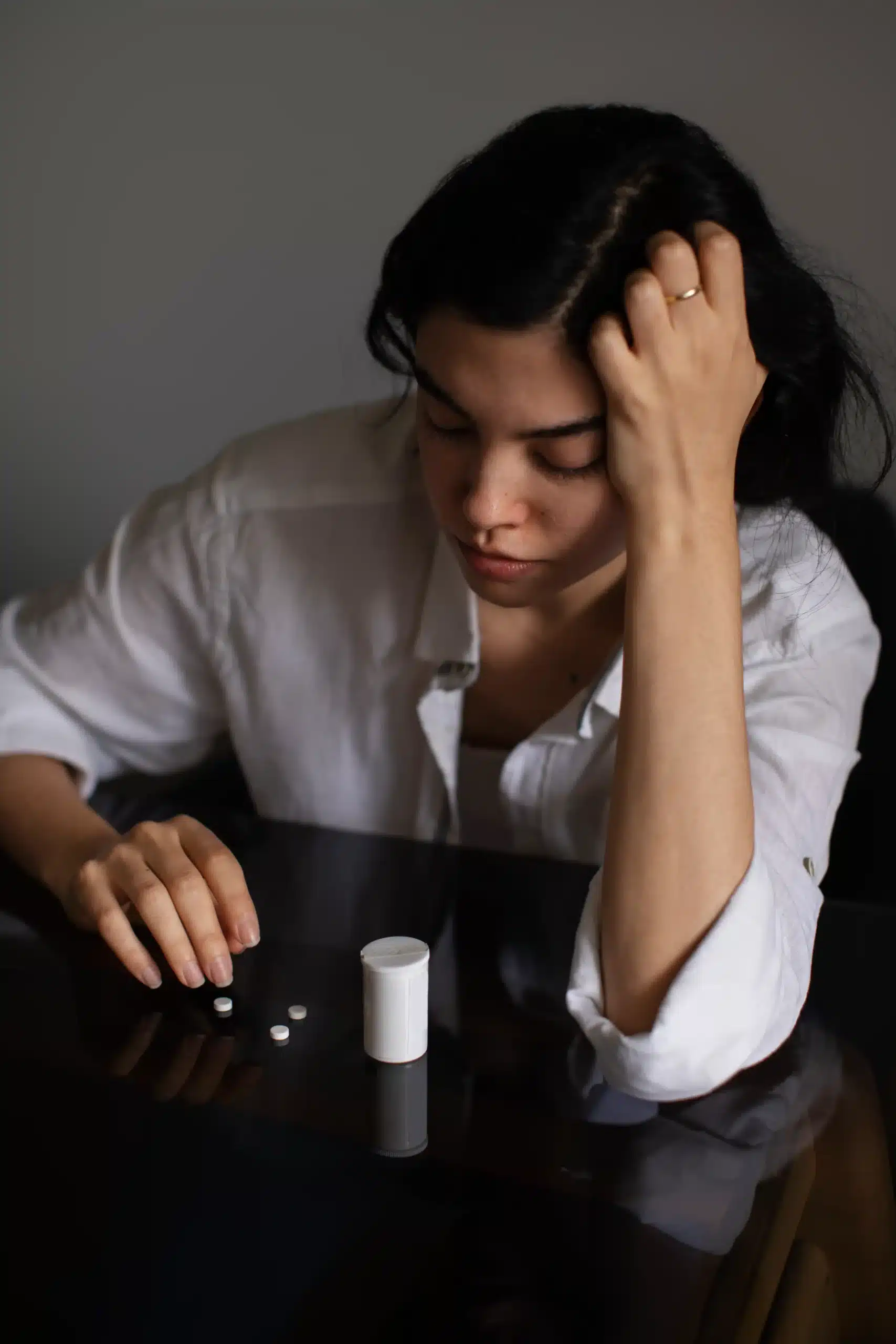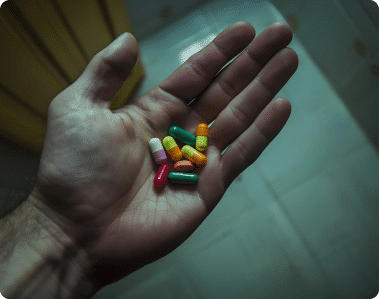Ibogaine and ayahuasca are both powerful plant medicines known for their deep psychoactive effects and healing properties. However, the two are quite different in origin, chemistry, cultural context, and therapeutic application. At Experience Ibogaine, we often receive questions about which is more effective for healing trauma and breaking free from addiction. Let’s explore the differences between ibogaine and ayahuasca.
What is the difference between Ibogaine and Ayahuasca?
While ibogaine and ayahuasca are both psychedelics with healing potential, they both offer very different experiences and outcomes. Here is a detailed overview of ibogaine and ayahuasca:
Origin
Ibogaine comes from the root bark of the Tabernanthe iboga plant, which is native to Central West Africa. It has been used for centuries by the Bwiti people in spiritual and healing rituals.
On the other hand, Ayahuasca is a brew made from the Banisteriopsis caapi vine and the Psychotria viridis leaf, originating from the Amazon basin. Indigenous tribes in Peru, Brazil, and Colombia have used it in ceremonial contexts for generations.
Cultural and Traditional Significance
Ibogaine stems from iboga, which plays a central role in the Bwiti spiritual tradition. This plant is used in rites of passage and intense healing ceremonies held to reconnect individuals with their life path.
Ayahuasca also holds a similar position among Amazonian tribes, where it is called “the vine of the soul.” It is often consumed in shaman-led ceremonies that are meant to foster spiritual insight, physical healing, and connection with ancestral knowledge.
Both these medicines have been passed down through oral tradition as cultural cornerstones in their regions of origin.
Chemical Composition
Ibogaine is a single alkaloid extracted from iboga, known for its dissociative and neuro-regenerative properties. It primarily interacts with the brain’s serotonin, dopamine, and opioid systems. It primarily works on the NMDA receptors.
Ayahuasca, on the other hand, is a combination of DMT (from Psychotria viridis leaf) and MAO inhibitors (from the Banisteriopsis caapi vine). While ibogaine is more long-lasting and physically intense, ayahuasca’s effects are more fluid and visionary. It primarily works on the 5-HT2A receptors.
Uses and Benefits
Both ibogaine and ayahuasca are known for their potential to cause deep psychological healing. However, their applications are different.
Some benefits of using ibogaine are:
- Disruption of addiction patterns, especially dependency on opioids and stimulants
- Neurological reset and reduced withdrawal symptoms
- Insight into personal trauma and destructive behavior
Some benefits of using ayahuasca are:
- Emotional catharsis and trauma release
- Deep spiritual insights and enhanced self-awareness
- Treatment for depression and anxiety
Physiological Effects
Ibogaine works by flooding your brain’s receptor sites, especially those linked to addiction, like opioid and NMDA receptors. This interrupts your brain’s patterns of addiction and often results in a physiological and psychological reset, helping you experience little to no withdrawal.
Ayahuasca affects serotonin receptors, particularly the 5-HT2A receptor, causing vivid visions and introspective experiences. While ayahuasca opens your mind through emotional purging, ibogaine digs into your neurological pathways. Both ibogaine and ayahuasca engage the brain through different mechanisms of healing.
Risks and Side Effects
Ibogaine carries significant physical risks, particularly related to the heart. So, if you use it without proper screening and medical supervision, it can lead to fatal arrhythmias. In clinical settings like ours, we evaluate cardiac health beforehand to ensure the safety of all of our patients. Different research and clinical studies have found that when you administer ibogaine in a medically controlled environment, it can be safer and more effective.
We screen our patients closely for heart rate irregularities, liver function, and other important risk indicators before treating them with ibogaine. If you are someone with pre-existing health conditions such as cardiac arrhythmias, liver disease, or psychiatric disorders, you may be at increased risk. So, we do not recommend you for any patient without a thorough evaluation.
Ayahuasca’s side effects are typically psychological or gastrointestinal, including nausea, vomiting, and anxiety during the experience. It can also lead to an increased heart rate and affect your blood pressure.
While each person’s subjective experience varies, some people find it enlightening, and others experience overwhelming or frightening trips. Some people with a personal or family history of schizophrenia or bipolar disorder have reported having psychotic episodes. For this reason, we recommend mental health screening before participating in an ayahuasca ceremony.
At our ibogaine treatment facility, we emphasize preparation and aftercare to help you manage and reduce these risks. We aim to make sure every patient of ours is supported before, during, and after the treatment process.
Legal Status and Accessibility
Ibogaine is currently illegal in the United States due to its classification as a Schedule I substance. However, it is legally accessible in countries like Mexico, Brazil, South Africa, and New Zealand when it is used in a clinical setting. Our facility, located in Mexico, operates legally and under medical oversight to provide ibogaine therapy to international patients looking for addiction recovery.
Ayahuasca exists in a legal gray area. While DMT is a controlled substance in many countries, religious or traditional use of ayahuasca is often permitted in places like Peru, Brazil, and even some parts of the U.S. under specific exemptions.
Ibogaine Vs Ayahuasca: Role in Drug Addiction Recovery
Both ibogaine and ayahuasca have shown significant promise in helping people transform their lives. However, their mechanisms and efficacy are different. Ibogaine targets the brain’s receptors that are linked to opioid dependence, which reduces cravings and withdrawal symptoms with a single session. Many patients have reported waking up with no desire to use substances again.
Ayahuasca allows individuals to process trauma and emotional pain. It promotes spiritual healing and insight but may require multiple sessions to provide sustained benefits.
Ibogaine Vs Ayahuasca: Which One is Right for You?
Making the decision between ibogaine and ayahuasca depends primarily on your personal needs, goals, and medical history. Ibogaine is better for you if you are struggling with opioid addiction, chronic relapse, or substance dependence. Ayahuasca may be a better fit for you if you are looking for emotional clarity and spiritual growth or hoping to address depression and anxiety.
Key Takeaways
While ibogaine and ayahuasca come from different parts of the world, they both share a reputation for providing powerful and long-lasting healing. Both ibogaine and ayahuasca have unique properties, risks, and treatment processes. At Experience Ibogaine, we believe that safety, proper screening, and aftercare make all the difference. Whether you are struggling to break free from substance or pursuing deep emotional healing, you don’t have to go through it alone. We are here to provide ibogaine treatment and guide you through the treatment process with experience, care, and the medical expertise you need to make your journey safe and effective. Speak with a professional at our facility today!




